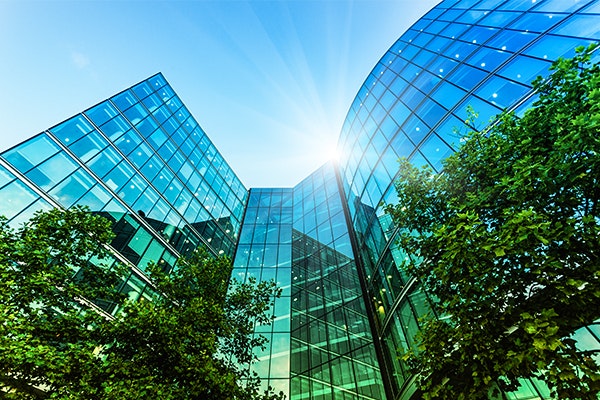Achieving Sustainability Goals and Meeting the Needs of Building Occupants Don't Have to be Competing Interests

Manish Sharma, Vice President and General Manager, Sustainable Buildings, Honeywell
Today’s society is more conscious than ever regarding how the environment they work and live in impacts their well-being and that of the world. A global survey conducted by Honeywell in 2022 found that office workers worry about poor air quality and want more transparency about the air quality inside buildings from their employers.
Additionally, policies being implemented worldwide are pressing building owners for more information and accountability regarding their carbon footprint.
Caught between the notion that they must either invest in new technologies that better support their occupants’ well-being or reach their sustainability goals, building owners should know that the two are no longer competing interests.
For that matter, ignoring either is also not an option. Some parents have even started sending pocket-sized CO2 monitors to school with their kids to covertly assess whether the indoor air is safe.[i] While indoor CO2 level is not a proxy for overall IAQ, it’s still accepted as a gauge of how much second-hand air an occupant is likely to inhale and, therefore, of potential virus transmissibility.[ii]
Building owners also face increasing pressure to develop and implement sustainability plans. Today, commercial buildings account for more than 36% of global energy consumption[iii] and nearly 40% of direct and indirect CO2 emissions.[iv] Conversely, HVAC systems often present the largest opportunity for conserving building energy use and reducing operating costs.
Buildings – just like the organizations and people who use them – need to be managed dynamically with the ability to adjust to outside pressures like weather and energy regulation to indoor concerns like occupancy levels and IAQ.
Instead of prioritizing either IAQ or energy efficiency, facilities owners need to look for ways to make their buildings more dynamic and responsive. Today’s solutions don’t require a massive and expensive mechanical overhaul like changing out the boilers or a major building envelope upgrade like replacing all the windows. A multimodal solution can be added incrementally, integrating it into the existing HVAC system as time and budget allow.
It’s now possible to install a much smarter, dynamically responsive control system that makes a 10-year-old HVAC system more efficient without requiring major mechanical changes. Modern multimodal controls sense both occupancy of a specific space and weather conditions and adjust ventilation accordingly, whether it’s a frigid 5 degrees Fahrenheit or scorching 95 degrees, or a high school that instead of having its occupancy evenly dispersed, has a packed gym for a pep rally.
The need to better support occupant well-being and achieve greater sustainability can be complementary, not competing goals. It’s time for building owners to embrace the moment and commit to upgrading their facilities with solutions that enhance IAQ and deliver a safer, and more energy-conscious future.
[i] New York Times, The hot new back-to-school accessory? An air quality monitor. Emily Anthes, October 10, 2021. [Accessed October 15, 2021]
[ii] Washington Post, “The coronavirus is airborne. Here’s how to know if you’re breathing other people’s breath.” Chris Mooney, February 10, 2021. [Accessed October 14, 2021]
[iii] International Energy Agency, “Buildings: A source of enormous untapped efficiency potential.” 2021. [Accessed September 15, 2021]
[iv] American Council for an Energy-Efficient Economy, “Smart buildings: using smart technology to save energy in existing buildings,” by Jennifer King and Christopher Perry, February 2017. [Accessed September 19, 2021]